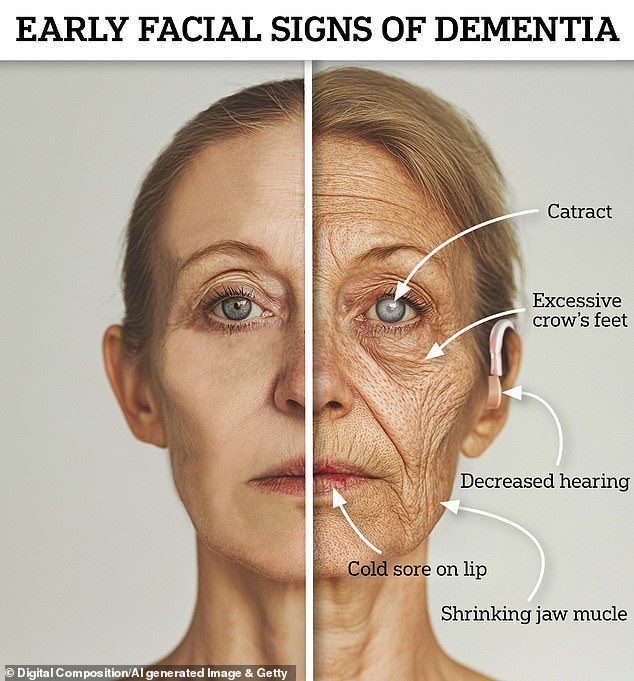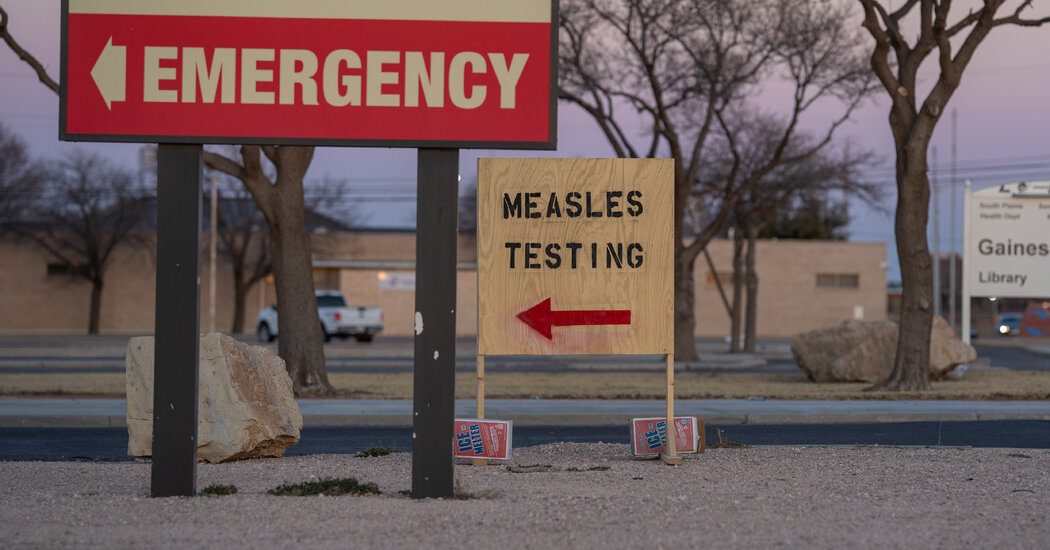
Are you curious about how to identify signs of dementia in yourself or a loved one before it becomes a serious issue?
Research indicates that subtle changes in the face—particularly around the eyes, ears, and mouth—could act as early warning signs for dementia, potentially allowing for detection years before formal medical evaluations.
Dementia refers to a collection of symptoms that impair memory, language, problem-solving skills, and other cognitive functions to the point that daily life is disrupted.
The most prevalent type is Alzheimer’s disease. As there’s no singular test to definitively diagnose this condition, healthcare providers typically utilize a mix of examinations, assessments, and imaging techniques.
While forgetfulness is commonly recognized as the initial sign of dementia, early indicators may also manifest in facial features that point toward possible cognitive decline.
1. Reduced Jaw Muscle Mass

A noticeable reduction in jaw muscle size may be among the most recognizable dementia indicators.
Research conducted by Johns Hopkins Medical Institutions discovered that individuals with diminished temporalis muscles were 60% more likely to experience dementia.
Skeletal muscle mass comprises about one-third of a person’s overall body weight, and after age 50, individuals typically lose one to two percent of muscle mass annually.
However, sarcopenia—characterized by rapid muscle loss—can lead to pronounced weakness in facial muscles, particularly the temples.
In their study, researchers utilized MRI scans to measure the temple muscles of 621 participants and found that 131 had larger muscles while 488 exhibited smaller muscle sizes.
Over an average follow-up period of 5.8 years, it was revealed that those with the greatest loss of temple muscle had a substantially higher risk of developing dementia.
Professor Marilyn Albert, a co-senior author on the study, stated: ‘We found that older adults with smaller skeletal muscles have a 60% higher likelihood of developing dementia when adjusting for other risk factors.’
2. Increased Crow’s Feet
An increase in crow’s feet around the eyes may also signal early stages of dementia, according to researchers.

A dramatic decrease in jaw muscle may be one of the easiest signs to spot for dementia.
A study published in the journal Alzheimer’s Research and Therapy in November 2024 observed that wrinkles near the eyes are correlated with cognitive impairment.
The findings revealed that individuals with more pronounced wrinkles around the eyes were 2.5 times more likely to exhibit cognitive impairment, signifying a potential precursor to dementia.
The researchers noted: ‘Facial aging, whether perceived or measured, may serve as an indicator of cognitive decline and dementia risk among older adults.’
‘Our investigation showed that a higher perceived facial age is associated with an elevated risk of cognitive impairment and dementia.’
3. Presence of Cataracts
Research in the British Journal of Ophthalmology indicated that individuals with age-related macular degeneration, cataracts, or diabetes-related eye conditions are at a significantly increased risk for dementia.
The study monitored around 12,000 adults aged 55 to 73 and studied the correlation between dementia cases and age-related eye conditions over a span of roughly 15 years.
Results showed that those with age-related macular degeneration, which affects the central area of the retina, faced a 26% higher risk for dementia.
Furthermore, the risk was found to be 11% higher for individuals with cataracts and 61% higher for those with diabetes-related eye diseases.

An increase in crow’s feet around the eyes could be an early sign of dementia, according to academics.
The findings also highlighted that those with two eye-related conditions possessed a greater risk of developing dementia than those with only one.
Additionally, individuals with at least two eye conditions alongside issues such as diabetes, heart disease, stroke, or depression were nearly three times more likely to face dementia.
Professor Eef Hogervorst from Loughborough University, not involved in the research, mentioned to The Guardian that reduced visual engagement might contribute to dementia, as less visual stimulation can limit blood flow to the brain.
4. Sudden Hearing Loss
Another significant sign of potential dementia is a sudden decline in hearing ability.
According to the Alzheimer’s Society, difficulties in grasping sounds and speech may necessitate increased cognitive effort from the brain.
This greater exertion can lead to alterations in the brain, affecting memory and cognitive functions.
Moreover, the charity cautions that individuals experiencing hearing issues may withdraw from social settings, leading to isolation—a known risk factor for dementia.
While a direct correlation between hearing loss and dementia remains unclear, the society posits that hearing impairments could be an early warning sign of dementia onset.
5. Cold Sores Around the Mouth
Lastly, cold sores on the lips might also serve as an indicator of dementia.

Cold sores are caused by Herpes simplex virus 1 and have a link to an increased risk of the memory-robbing disease.
Researchers from Uppsala University in Sweden found a connection between cold sores, specifically the Herpes simplex virus-1 (HSV-1), and an elevated risk of dementia.
They monitored 1,002 individuals, of whom 80% were HSV-1 carriers and over the age of 70, throughout a 15-year period.
By the end of the follow-up, 32 participants had developed Alzheimer’s disease, and 63% had another form of dementia, making up 11% of the cohort. Notably, 89% of these individuals were HSV-1 positive.
In contrast, among those who did not develop dementia, 82% were found to be HSV-1 carriers.
Researchers are still exploring why this association exists; it’s possible that the virus stays dormant in the nervous system for life.
At any time, flare-ups can occur, potentially causing inflammation in the nervous system, which may compress and damage the delicate tissue of the brain over time.
Ultimately, this could contribute to changes associated with dementia, including memory loss, brain tissue degradation, and confusion.









